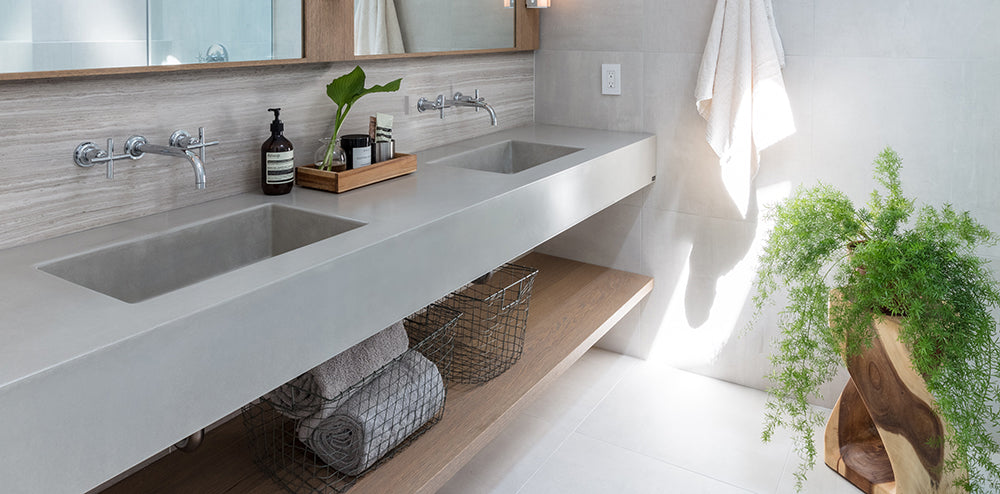
The Advantages of Using Concrete In Interior Design

Concrete has long been a staple in the built environment throughout the world, and for good reason; concrete is a durable yet affordable material for use in nearly all types of construction.
While it has primarily been a fixture in civil engineering applications, a renewed creative interest has led to increased use of concrete in interior design. Concrete is on the radar for architects, designers, and homeowners.
Concrete makes a great choice for those who are after a very specific look or feature but aren’t able to find any off-the-shelf solutions. It also possesses flexibility, rugged authenticity, and natural aesthetic appeal. It comes with a wide variety of benefits that should interest anyone in the design realm.
So, in case you’d like a refresher course on why you should use concrete for interior design, let’s take a look at some of the main reasons why it makes an excellent choice.

Versatility: Fully Customizable
The technology behind concrete has evolved since it was first introduced. Thanks to changes in the formulation, artisan concrete is stronger, lighter, and more flexible than the traditional forms. Advances in sealant technology have also enabled concrete to become nearly impervious to staining. You’ll find it everywhere from the kitchen to the bathroom.
But it’s the aesthetic possibilities that have generated the greatest interest. Concrete can be cast in nearly any color desired. Not only that, but the shape, size, finish, thickness, patterns, and length is fully customizable. That means those who choose concrete can exercise nearly full creative control over the look and feel of the finished product.
With possible concrete uses in interior design in both residential and commercial applications, concrete can fit stylistically almost anywhere. Whether you need a concrete countertop to compliment your shiplap wall, a unique coffee table, or entire walls made from concrete, there’s no design scheme you can’t complement with this material. It also goes especially well with certain types of acoustic ceiling tiles, allowing for echo reduction if needed.
 Some of the many colors fabricators can cast concrete in
Some of the many colors fabricators can cast concrete in
Design Cohesion: Matching
Another great thing about implementing concrete is the design cohesion it can create. If you want to have uniformity and match, for example, interior areas with outdoor areas, concrete is perfect for creating stylistic cohesion.
If you have a more modern home with poured concrete walls, it will be even easier to implement more concrete in your home interior design. For those who want to experiment with a variety of materials, concrete features can be used to complement a luxury vinyl plank floor.
Aesthetic: Modern, Industrial, and More
One of the biggest reasons people are flocking to concrete as an interior material is its unique aesthetic. Concrete has a ruggedly authentic presence about it that many feel surpasses that of man-made stone.
The precise chemistry and craftsmanship used to create each and every piece are apparent, and concrete brings a subtle, meditative vibe to your home. The plethora of colors, finishes, and textures available for concrete leaves you plenty of room to get creative as well.
 A custom concrete sink built to exact dimensions for this beautiful master bathroom
A custom concrete sink built to exact dimensions for this beautiful master bathroom
Concrete Can Thrive Anywhere It’s Used: Including Outdoors.
Now, you can make use of this stylish and versatile material - whether you need a display counter in a retail location or a bathroom counter for a residential home.
It’s stain-resistant enough to put your mind at ease about spills and maintenance, but also eco-friendly and very customizable. The versatility of concrete sets it apart from other construction materials and is the main selling point for architects, designers, and homeowners.
Explore Concrete in Interior Design